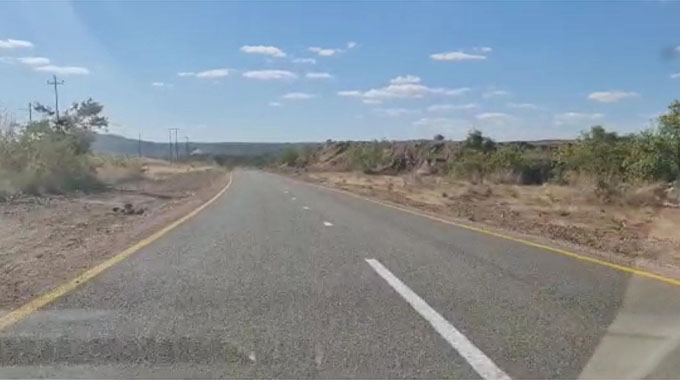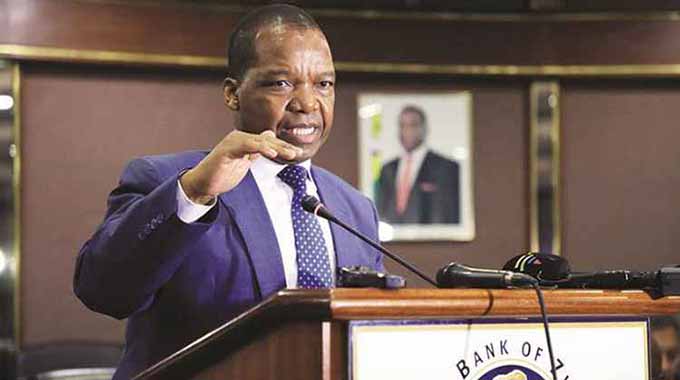ERRP2 moves to grassroots roads

Blessings Chidakwa-Municipal Reporter
THE Emergency Road Rehabilitation Programme has moved into high-density suburbs in towns and cities, which have been neglected for years by inept and corrupt urban councils.
Across the country there is a hive of activity on roads with both arterial and suburban roads being rehabilitated and upgraded as part of the country’s modernisation drive, taking into account the centrality of infrastructure in industrialisation towards attaining Vision 2030 for Zimbabwe to become an upper middle class economy.
Transport and Infrastructural Development Minister Felix Mhona said the rehabilitation of roads is an ongoing exercise which the Government is accelerating.
“President Mnangagwa is talking about inclusive development and as a ministry we are simply fulfilling that mandate by coming down to grassroots level.
“There are neglected roads by councils which we are rehabilitating. It’s a nationwide programme targeting even the remotest of areas, a 5km stretch of Binya road in Mhondoro Ngezi district was surfaced and opened to traffic,” he said.

“There are neglected roads by councils which we are rehabilitating. It’s a nationwide programme targeting even the remotest of areas, a 5km stretch of Binya road in Mhondoro Ngezi district was surfaced and opened to traffic,” Minister Mhona said.
Minister Mhona said as the year progresses, they would have worked on a number of roads.
“Some people had never seen heavy equipment repairing roads in their areas for years, but are now witnessing development under the Second Republic,” he said.
A survey across Harare showed that roads under construction include Kuwadzana Extension strip off the Harare-Bulawayo Highway, Kirkman road while Bitumen is moving on site to rehabilitate the busy Harare Drive.
Some suburban roads are already complete including Gura road in Unit K, Chitungwiza which was in an even worse condition than the arterial and connecting roads.
Most of the arterial roads have been rehabilitated including the busy Seke, Paisley, Kevin South, Masotsha Ndlovu, and St Patricks.
A Herald crew visited Kuwadzana Extension road off the Harare-Bulawayo Highway where it observed that motorists were using detour roads. Gravelling was underway in preparation for tar surfacing.
Motorists and local residents hailed the Government for intervening to improve the state of roads across the country.
A Kuwadzana resident, Granny Esther Mberikwazvo, said since the road was constructed decades ago, no major rehabilitation works were done.
“This is wonderful, potholes had become a common feature. Our plea is that when rehabilitation works are complete the road should have humps to discourage speeding as it is used by learners,” she said.
Most of these roads were designed for light use, and as vehicle ownership and density increased the roads quickly fell into disrepair, with many barely having a tarred surface.
Mrs Barbra Bota is glad that the road was being tarred.
“It was mud all over. We commend the Government for a sterling job as our vehicles will have a longer life span,” she said.
Another Kuwadzana resident, Mr George Genge, expressed satisfaction with the rehabilitation of the road.
“Our road was now in bad shape and school learners were having a torrid time with motorists who were trying to negotiate potholes,” he said.
For most of last year and leading into this year, the focus of the ERRP2 was on major roads, the arterial roads leading into city centres and the major roads connecting suburbs.
A Chitungwiza resident, Mrs Praise January said: “The Government of Zimbabwe is doing a very good job of constructing roads, we had a very bad experience in travelling from here to town.
“We could take more than 30 minutes to get to town because of the bad roads, now we are very excited. It is now enjoyable to use our roads unlike before.”
Mr Takunda Musengamati of Kuwadzana said: “I just want to thank the President for a job well done on reconstructing the busy road. It had become a death trap. We are grateful as residents of Kuwadzana that our road is being repaired.”
Municipalities had a great deal of autonomy for many services, and were supposed to build and maintain their road networks.
To get round this legal restriction and take effective action, the Government had to first declare urban roads a state of disaster and start rehabilitation works.











Comments